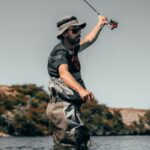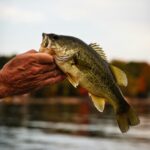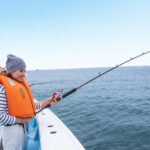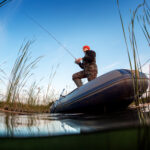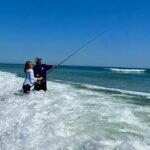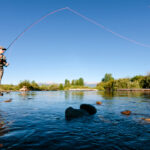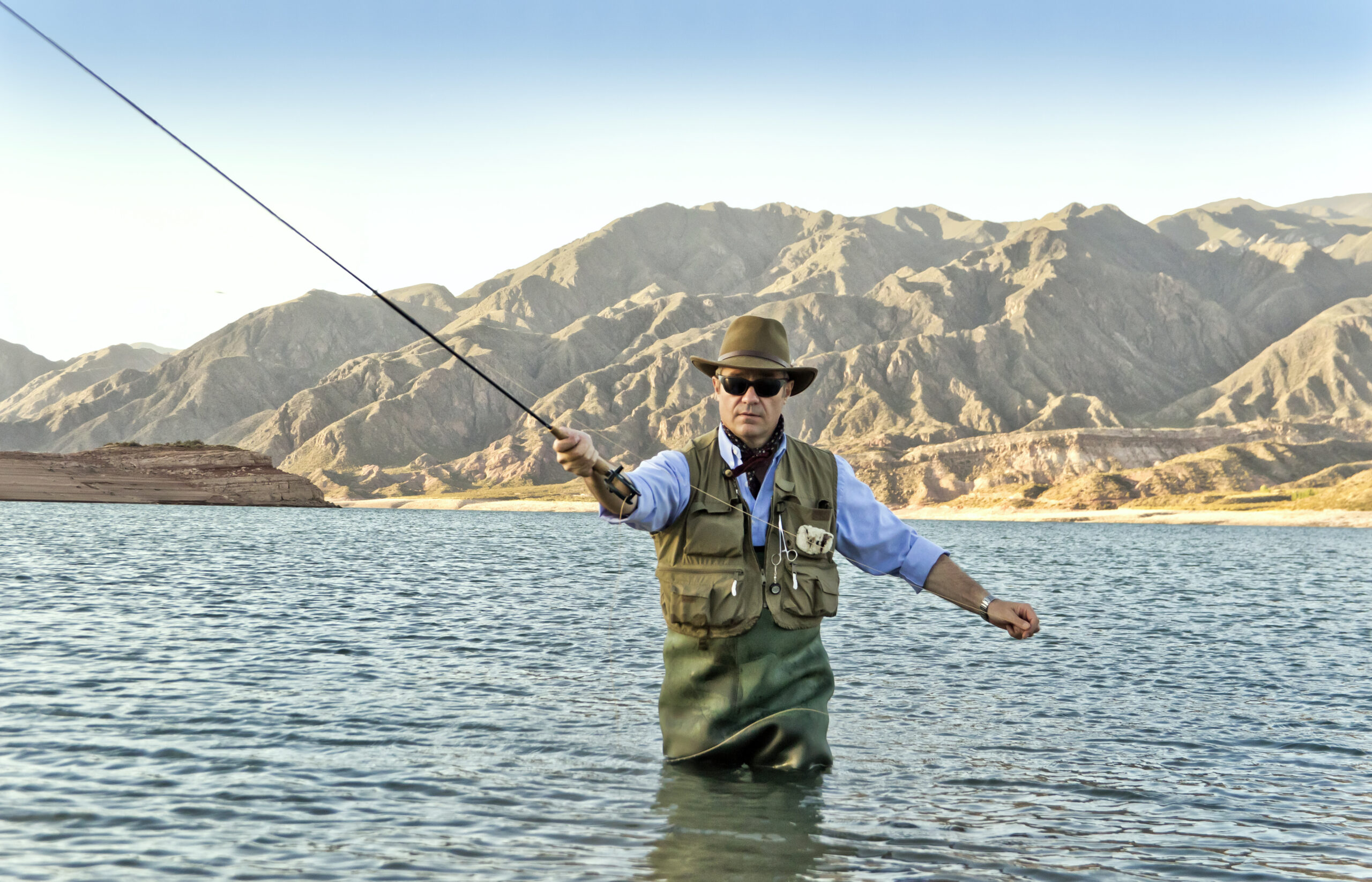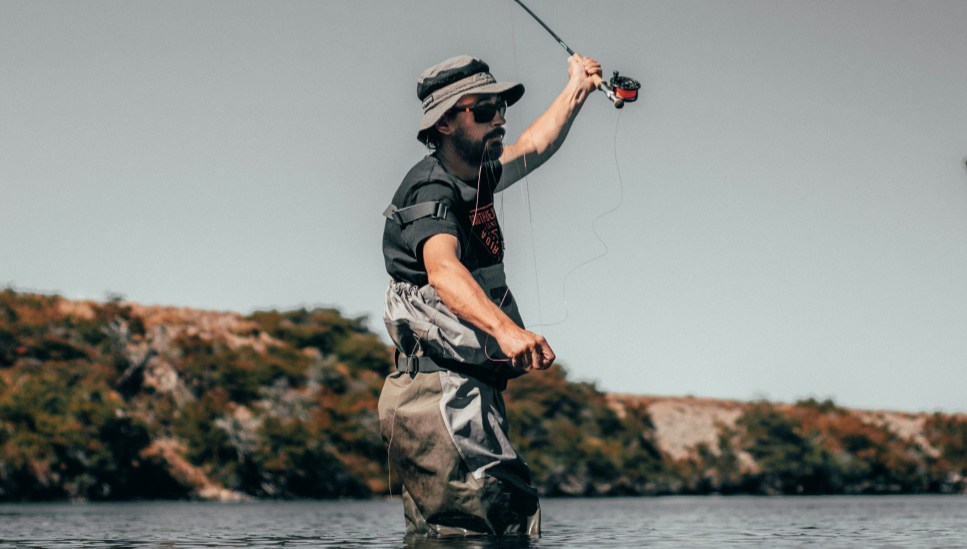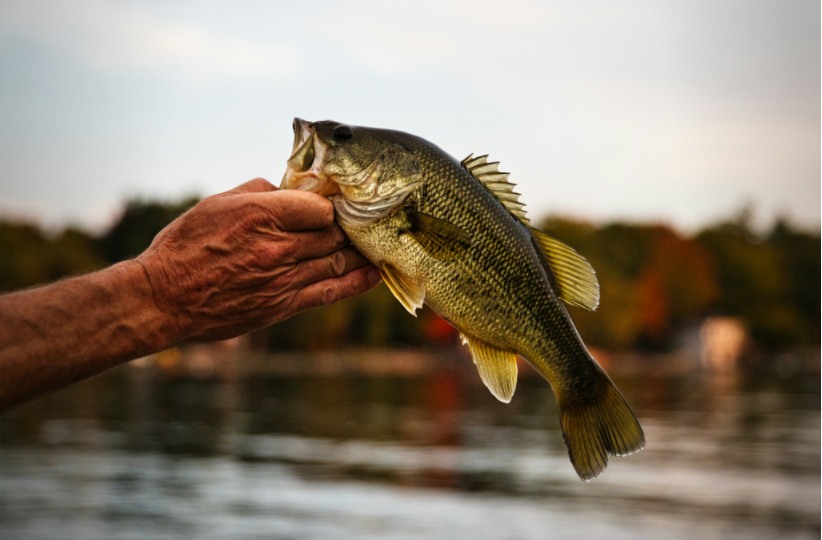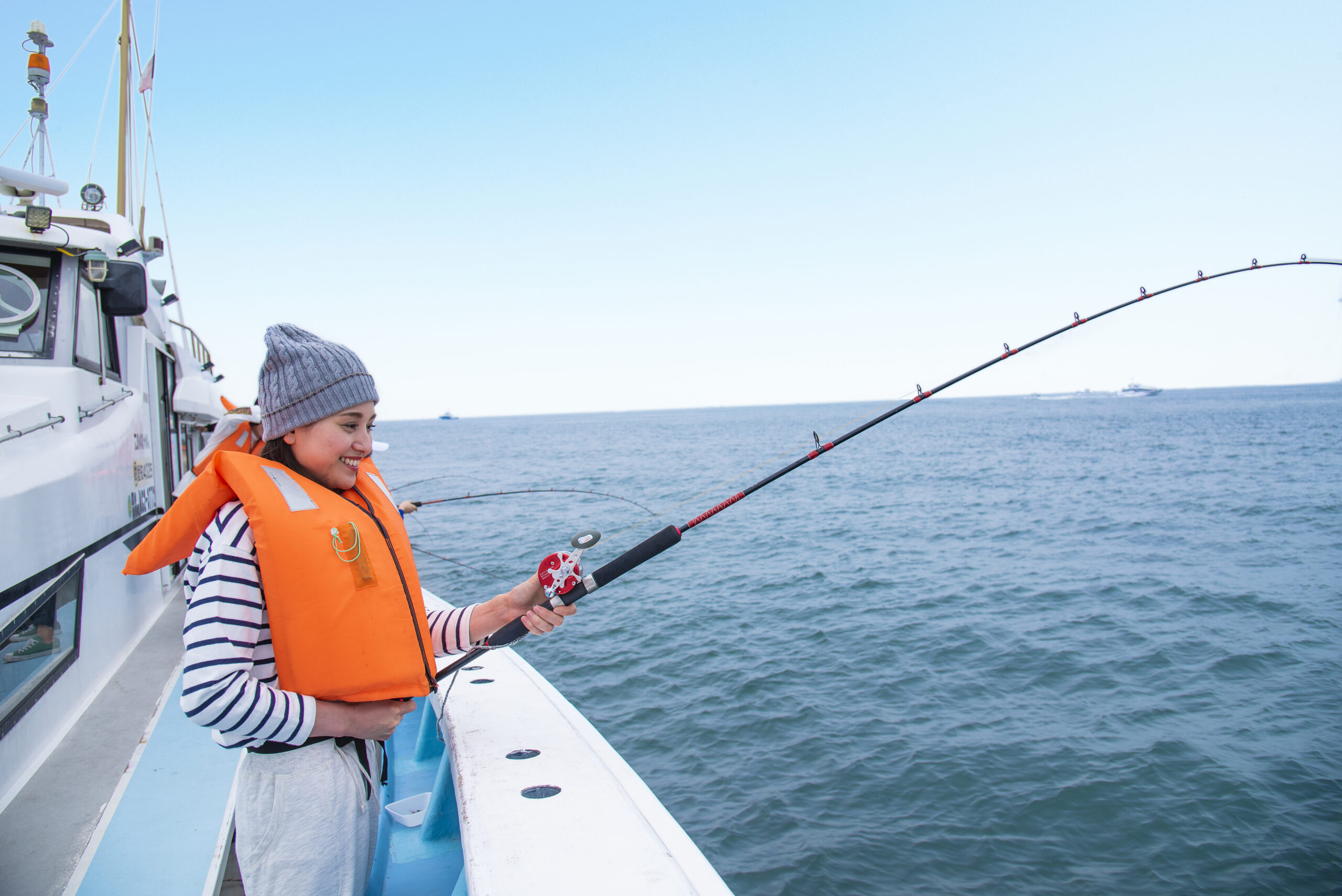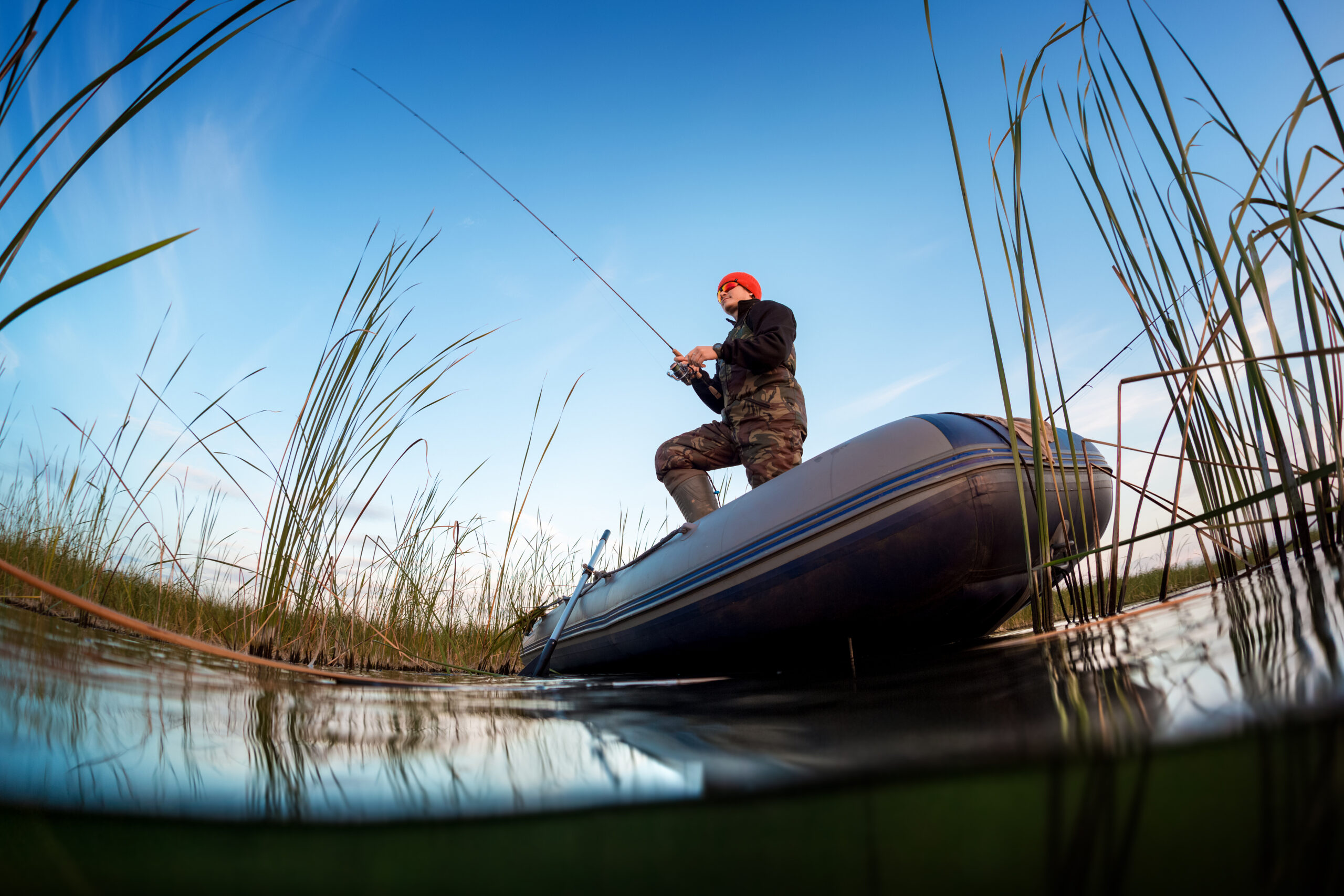Wading for trout is one of the most rewarding yet challenging forms of fishing. There’s something deeply satisfying about stepping into a cool stream, feeling the current against your legs, and casting to a rising trout. However, the very act of wading can also work against you—spooking fish, disturbing the water, and reducing your chances of success. To master the art of wading for trout, you need a combination of stealth, patience, and technique. In this guide, we’ll break down the essential strategies to help you stay quiet, blend into your surroundings, and land more trout.
1. Choose the Right Gear for Stealth and Comfort
The right gear can make or break your wading experience. When selecting waders and boots, consider both comfort and how well they help you move quietly through the water.
✅ Waders – Opt for breathable, lightweight waders that allow flexibility and comfort during long periods of movement. Stockingfoot waders paired with separate wading boots provide better grip and comfort. Neoprene waders work well in colder waters but can be too warm for spring conditions.
✅ Wading Boots – Felt-soled boots provide excellent traction on slippery rocks, but they are banned in some areas due to concerns about spreading invasive species. Rubber-soled boots with metal studs offer a good alternative and provide solid grip without damaging the stream bed.
✅ Clothing – Wear earth-toned or camouflaged clothing to blend in with the natural surroundings. Avoid bright colors, which can easily spook wary trout. Moisture-wicking fabrics will keep you dry and comfortable.
2. Approach the Water with Caution
The way you enter the water sets the tone for the entire fishing session. Trout are extremely sensitive to vibrations and disturbances in the water, so you need to treat the approach like a game of hide and seek.
- Enter downstream – Always approach from downstream, moving against the current. Trout face upstream, so they’re more likely to spot you if you approach from the front.
- Go slow and low – Keep your body low and move slowly. If you must adjust your position, do so in small, deliberate steps.
- Stay in the shadows – If possible, use tree cover and shadows to your advantage. This makes you less visible to the fish.
- Avoid splashing – Slide your feet along the bottom rather than lifting them too high, which creates unnatural disturbances in the water.
3. Read the Water and Find the Fish
Knowing where trout are likely to hold will help you position yourself better and avoid unnecessary movement in the water.
🎯 Eddies and Pools – Trout often hold in slower-moving water behind rocks or in deeper pools where they can conserve energy while waiting for food to drift by.
🎯 Seams and Current Breaks – Look for the seam where faster and slower water meet. Trout often hold here, ready to strike at insects drifting by.
🎯 Undercut Banks and Structure – Overhanging vegetation and submerged logs provide both shelter and access to food.
🎯 Riffles and Runs – Shallow riffles often hold smaller trout, while deeper runs may hold larger fish.
4. Cast with Precision and Minimize False Casts
When wading, you’re often fishing in tight quarters with overhanging trees and brush. Precision and minimal disturbance are key to success.
- Use a shorter, lighter rod – A 7’6″ to 8’6″ 3- or 4-weight rod works well for most small to medium streams.
- Roll cast or side cast – These techniques help you avoid getting tangled in trees or spooking fish.
- Avoid casting directly over fish – Instead, aim for a spot slightly upstream of the fish and let the fly drift naturally toward it.
- Limit false casts – Every false cast increases the chance of spooking fish. Try to deliver the fly with as few casts as possible.
5. Presentation is Everything
A trout’s decision to strike often comes down to how naturally the fly behaves in the water. Focus on presenting your fly in the most lifelike way possible.
- Match the hatch – Pay attention to what insects are hatching and use flies that mimic them. Carry a variety of dry flies, nymphs, and emergers to adapt to changing conditions.
- Use a dead drift – Allow the fly to drift naturally with the current without any tension on the line.
- Adjust depth – If fish are rising, use a dry fly or emerger. If they’re holding deeper, switch to a weighted nymph or streamer.
- Set the hook quickly – Trout have fast reflexes. As soon as you see or feel a take, give a quick but controlled hook set.
6. Fight and Land the Fish Carefully
After hooking a trout, your next challenge is to bring it in without losing it—or damaging it.
- Keep tension on the line – Let the rod do the work of absorbing the fish’s runs and headshakes.
- Let the fish run if needed – Don’t try to muscle the fish in too quickly, especially with light tippets.
- Use a landing net – A rubberized, catch-and-release net helps reduce stress on the fish.
- Wet your hands before handling – This protects the trout’s delicate slime coating.
- Revive the fish – If you plan to release the trout, hold it facing upstream in the water until it swims away on its own.
7. Stay Safe and Respect the Environment
Wading for trout can put you in some tricky situations. Fast-moving water, slippery rocks, and cold temperatures all pose risks.
⚠️ Wear a wading belt – A snug wading belt prevents water from flooding your waders if you fall.
⚠️ Use a wading staff – A collapsible staff helps maintain balance in swift currents.
⚠️ Avoid deep water – If the water reaches your waist and the current is strong, back out and reposition.
⚠️ Leave no trace – Pack out all trash, avoid damaging vegetation, and be mindful of spawning areas.
Final Thoughts
Wading for trout is as much about stealth and precision as it is about casting and presentation. When you master the art of moving through the water quietly, reading the current, and presenting your fly naturally, you’ll find that your success rate improves dramatically. Remember, trout fishing isn’t about rushing—it’s about patience, strategy, and respect for the environment. The next time you step into a stream, slow down, stay low, and let the water—and the trout—come to you.

